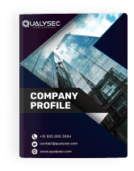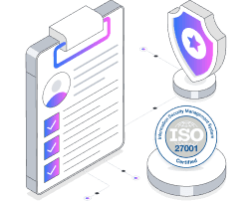The FDA Penetration Testing plays a crucial role in ensuring the safety and security of medical devices. This significance arises from the requirement for these devices to undergo evaluation and obtain clearance from the FDA before being sold in the United States. Much has been written about such processes; these would include the increasing focus on cybersecurity over recent years. This feature will clarify several aspects of relevance concerning cybersecurity when one submits a 510(k) and PMA filings towards medical devices, with a further focus on cyber-medical approvals. Let us delve deeper into FDA 510k submission and why regular FDA 510(k) vulnerability assessment is vital for cybersecurity. What is FDA Penetration Testing? FDA penetration testing is a comprehensive testing process during which simulated cyber attacks are undertaken by cybersecurity experts to locate flaws in medical devices and, very importantly, fix these problems. That way forward, the medical devices will be highly secured against known as well as unknown threats at every stage depending on the launching to their lifecycle. Objectives of FDA Penetration Testing The Process of FDA Penetration Testing FDA regulations for medical devices require several critical steps for penetration testing to ensure security evaluations are performed. Planning and Preparation Execution of the FDA Penetration Testing Remediation and Re-Testing Best Practices for FDA Penetration Testing Here are the best practices for FDA Penetration Testing: 1. Frequent Penetration Tests Penetration testing should not only be carried out during the FDA clearance application phase but also periodically during a device’s lifecycle to maintain a continuing sense of security. 2. Full Scope Be sure to test as many access points and use cases as possible, to identify and remediate all potential vulnerabilities. 3. Expert Penetration Testers Contract with seasoned cybersecurity professionals who understand both penetration testing methodologies and the FDA regulatory guidelines. 4. Transparent Reporting Maintain a clear and detailed reporting practice, which will inform stakeholders and regulatory bodies regarding the testing process and results. Benefits of FDA Penetration Testing Below are the benefits of FDA penetration testing: Penetration testing enhances the security of medical devices through the identification and mitigation of vulnerabilities, thereby enabling them to maintain immunity against possible cyber threats. This means penetration tests for manufacturers to pass FDA cybersecurity standards for market approval and maintaining device legality. The commitment to rigorous security testing indicates a manufacturer’s commitment to the safety of patients, encouraging belief in their products. Latest Penetration Testing Report Download FDA Penetration Testing Tools and Techniques Here are the FDA penetration testing tools & techniques: Automated Tools Nmap: Network discovery as well as security auditing. Metasploit: Exploit code development against the target machine executing. Burp Suite: web application security testing. Manual Techniques Code Reviews: Manual examination of the source code for the device and to find potential security flaws. Security Audits: Comprehensive reviews of the device’s security posture, including configurations and operational procedures. Wireless Testing Signal Interception: Testing the device’s resistance to wireless signal interception and jamming. Protocol Analysis: Examining communication protocols for vulnerabilities. The Basics of 510(k) and PMA Submissions 510(k) and PMA are the two submissions through which medical device manufacturers seek FDA approval. Devices with 510(k) pathways are substantially equivalent to those already in the market, whereas PMA follows devices that are novel or significantly different from those already existing. Both, however, require extensive information about the device that the manufacturer must provide, including safety data, performance testing, and clinical evidence to establish that it is safe and effective for use by human patients. In the 510(k) pathway, which encompasses principally Class II devices, the manufacturer is to prove, primarily, that the product is as safe and effective as a legally marketed predicate device. This means an adequate degree of risk control for the new device. On the contrary, the PMA pathway claims robust a product featuring a higher-level risk or novelty and usually faces more extensive review. Eligibility criteria for 510(k) clearance To obtain 510(k) clearance, medical devices must comply with predefined criteria identified and briefly summarized below. Device Risk Level— As an impassioned balance of safety and efficiency, the FDA has established 3 levels of oversight based on the risk each device poses. They are, broadly, low-risk devices exempt from premarket submission, medium-risk devices or Premarket Notification or 510(k), and high-risk devices, including Premarket Approval (PMA). Low—risk devices are generally exempt from premarket notification and include most Class I and select Class II devices. Medium—risk devices are mostly Class II devices, with some Class I devices. These require a 510(k). High—risk devices are those that sustain or support life, are implanted, or present a potentially unreasonable risk of illness or injury. These require premarket approval. Device Type — The types of devices that are not eligible for the 510(k) clearance process are: Devices that will be used as part of another device; Custom devices, and Devices intended for investigational use. Device History — The device must not have a history of being banned or withdrawn from the market; the FDA imposed any restriction on its use. Device Characteristics — The device must not pose an unreasonable risk to public health or safety and must be manufactured according to the 21 CFR 820 Quality System Regulation (QSR). It also has to comply with any appropriate performance standard that could be developed by the FDA or other international standards organizations. Major in scope, the device must be “substantially equivalent” to a legally marketed medical device, sometimes referred to as a “predicate device,” that was already cleared by the FDA. Key requirements for a successful 510(k) submission Several things must come together for a successful 510(k). Some of these are pretty obvious and follow directly from the eligibility criteria discussed above. Others are less apparent, making the value of engaging the services of a savvy regulatory consultant who understands precisely what the FDA is trying to get at and can document details to their satisfaction on day one hard to overstate. Understanding of the Device Classification —Device manufacturers have to determine the proper





